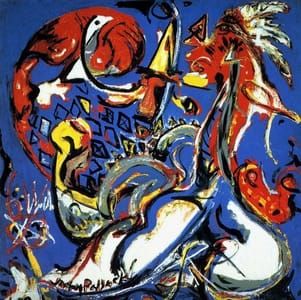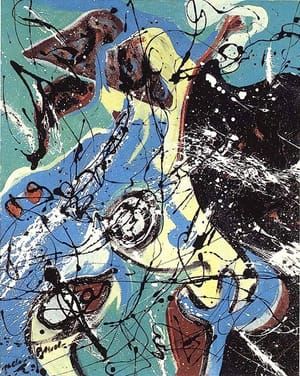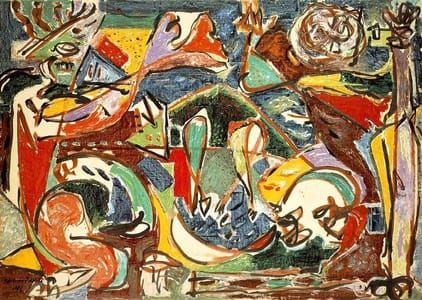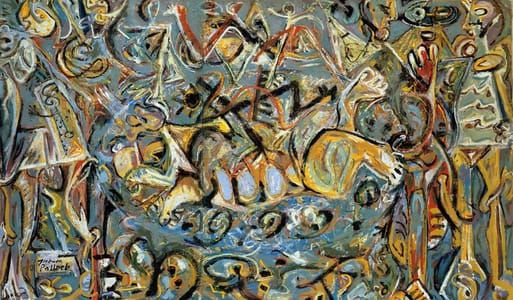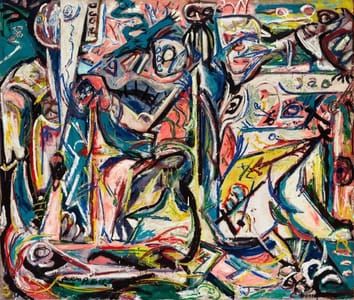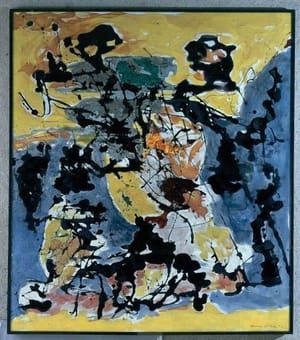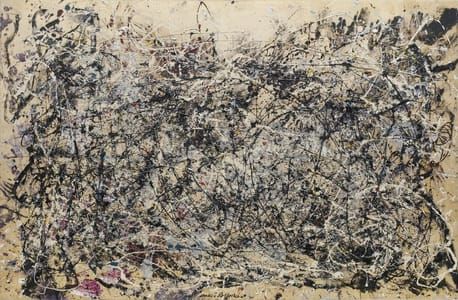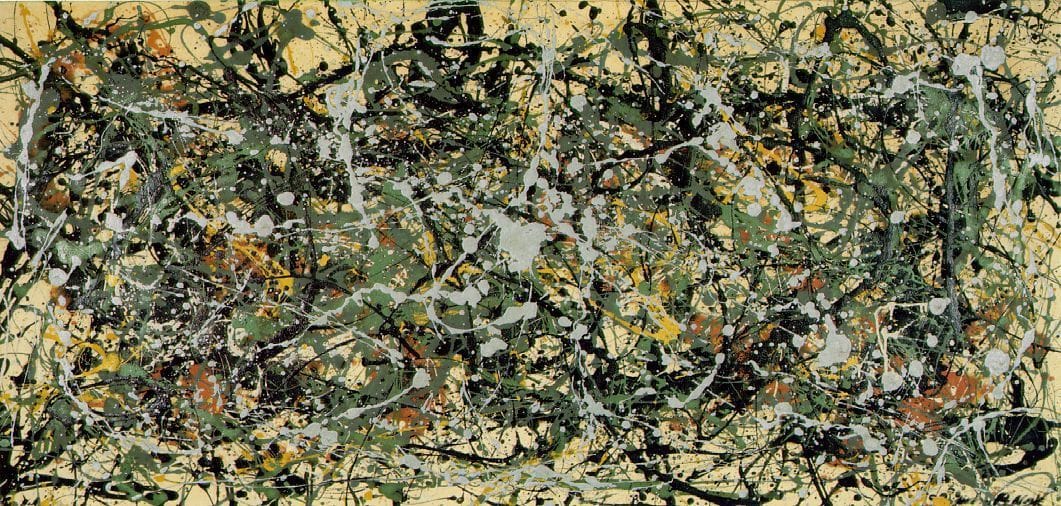

Number 8
Jackson Pollock
In Number 8, 1949, Pollock's line has a polymorphous potency - the capacity to be everywhere at once, to serve the ends of illusion and materiality The poet Frank O'Hara put it as well as anyone ever has when he wrote: "There has never been enough said about Pollock's draftsmanship, that amazing ability to quicken a line by thinning it, to slow it by flooding, to elaborate that simplest of elements, the line - to change, to reinvigorate, to extend, to build up an embarrassment of riches in the mass of drawing alone." It could no sooner be exclusively and reductively "optical" than it could be the slave of modernist literalness. It functioned supremely well as the vehicle of a speed-of-light alloverness, creating the impression that Pollock's great poured allover paintings arrived at their structure both internally and immediately (for all their dependence on a new process, these paintings do not, in fact, announce that process). Pollock's delicate crusts, which achieved an infinitesimal layer of relief, had profound affinities with two related modernist achievements, Analytic Cubism of Picasso and the late wall-sized Impressionism of Claude Monet.
Pollock's encrusted, puddled, labyrinthine, and weblike surfaces are physically, erotically present, and entice the viewer into a relation in which his body, and not just his eyesight, directly confronts the abstract field. This relation, which is at least as close to the experience of architecture as it is to the tradition of seeing through or "into" an illusionistic painting, can be deceptive. By means of his interlaced trickles and spatters, Pollock created an oscillation between an emphatic surface - and an illusion of indeterminate but somehow definitely shallow depth that reminds viewers of what Pablo Picasso and Georges Braque arrived at, with the facet-planes of their Analytical Cubism.
(http://davidbarbieri.com/index.php/jackson-pollock-2/)
Uploaded on Jun 20, 2017 by Suzan Hamer
Jackson Pollock
artistArthur
coming soon

